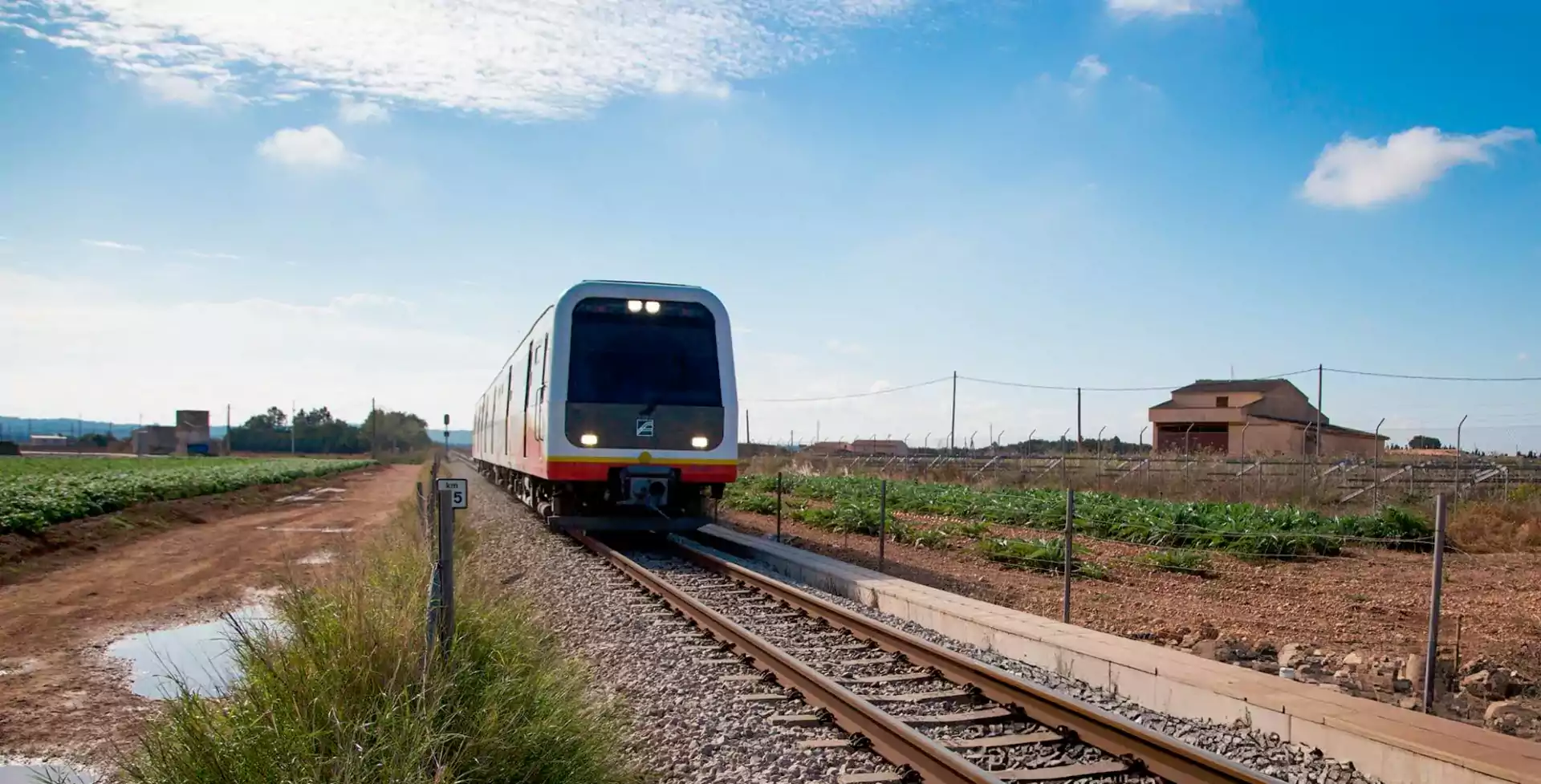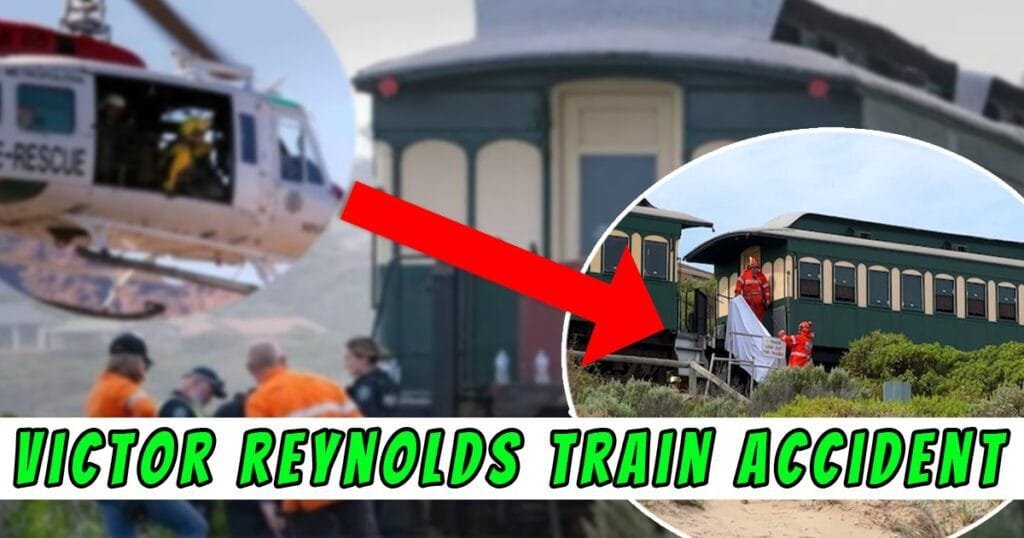The Victor Reynolds train accident has been a topic of significant concern and discussion in recent weeks. This tragic incident has drawn widespread attention, not only due to its severity but also because of the questions it raises about railway safety standards. As updates continue to emerge, it is crucial to stay informed about the latest developments and insights surrounding this unfortunate event.
The accident involving Victor Reynolds has sparked a wave of emotions among the public, highlighting the importance of understanding the circumstances surrounding such incidents. The tragedy serves as a reminder of the need for improved safety measures and accountability in the transportation sector.
This article aims to provide a comprehensive overview of the Victor Reynolds train accident, including the latest updates, expert analyses, and recommendations for preventing similar incidents in the future. By delving into the details, we hope to offer clarity and support for those seeking answers during this challenging time.
Read also:Paul Fix Net Worth A Detailed Exploration Of The Actors Wealth And Legacy
Table of Contents
- Victor Reynolds: A Brief Biography
- Overview of the Train Accident
- Latest Developments in the Investigation
- Analysis of the Causes
- Current Railway Safety Measures
- Support for Victims and Families
- Regulatory Responses and Actions
- Public Reaction and Media Coverage
- Lessons Learned from the Incident
- Future Preventive Measures
Victor Reynolds: A Brief Biography
Early Life and Career
Victor Reynolds was a well-respected figure in the transportation industry, known for his dedication to safety and innovation. Born and raised in a small town, he pursued a career in engineering, eventually specializing in railway systems. Over the years, Victor became a key advocate for improved safety protocols, earning accolades from peers and industry leaders alike.
Professional Achievements
Throughout his career, Victor Reynolds achieved numerous milestones, including the development of advanced safety technologies and the implementation of groundbreaking policies. Below is a summary of his professional achievements:
- Recipient of the National Safety Award in 2018
- Lead engineer for several major railway projects
- Published multiple research papers on railway safety
| Full Name | Victor Reynolds |
|---|---|
| Date of Birth | January 15, 1975 |
| Occupation | Railway Engineer and Safety Advocate |
| Education | Bachelor’s Degree in Mechanical Engineering |
Overview of the Train Accident
The Victor Reynolds train accident occurred on a fateful morning, leaving a lasting impact on the community. Initial reports indicate that the train derailed due to a combination of mechanical failure and human error. The incident resulted in multiple casualties and drew immediate attention from authorities and the media.
Details of the Incident
According to eyewitness accounts, the train was traveling at high speed when it suddenly lost control. The derailment happened near a densely populated area, increasing the severity of the impact. Emergency services were quickly deployed to the scene, but the extent of the damage was overwhelming.
Latest Developments in the Investigation
As the investigation into the Victor Reynolds train accident progresses, new details continue to emerge. Authorities have identified several key factors contributing to the tragedy, including outdated infrastructure and insufficient maintenance practices. These findings have prompted calls for immediate reforms in the railway sector.
Investigation Updates
Recent updates from the investigative team highlight the following:
Read also:Movierulzcom Kannada 2023 Your Ultimate Guide To Movie Streaming And Downloads
- Identification of critical flaws in the train’s braking system
- Insufficient training for train operators
- Limited resources allocated for regular maintenance
Analysis of the Causes
Experts have conducted a thorough analysis of the causes behind the Victor Reynolds train accident. While mechanical failures played a significant role, human error and systemic issues also contributed to the tragedy. Understanding these factors is essential for preventing similar incidents in the future.
Key Contributing Factors
The primary causes identified in the analysis include:
- Inadequate safety inspections
- Poor communication between railway staff
- Outdated technology and infrastructure
Current Railway Safety Measures
In response to the Victor Reynolds train accident, railway authorities have intensified their focus on safety measures. Current protocols include regular maintenance checks, advanced monitoring systems, and comprehensive training programs for employees. However, experts argue that more needs to be done to ensure the safety of passengers and staff.
Proposed Enhancements
To address the shortcomings highlighted by the accident, several enhancements have been proposed:
- Implementation of state-of-the-art safety technologies
- Increased funding for infrastructure upgrades
- Expansion of employee training programs
Support for Victims and Families
The aftermath of the Victor Reynolds train accident has placed a heavy burden on the victims and their families. Support services have been established to provide emotional, financial, and legal assistance to those affected by the tragedy. Community organizations and government agencies are working together to ensure that no one is left behind during this difficult time.
Available Resources
Victims and families can access the following resources:
- Counseling services for emotional support
- Financial aid programs for medical expenses
- Legal assistance for navigating compensation claims
Regulatory Responses and Actions
In the wake of the Victor Reynolds train accident, regulatory bodies have taken decisive actions to address safety concerns. New regulations have been introduced to improve accountability and transparency in the railway industry. These measures aim to restore public trust and prevent future accidents.
Key Regulatory Changes
The following regulatory changes have been implemented:
- Stricter safety standards for train operations
- Mandatory reporting of maintenance issues
- Increased penalties for non-compliance
Public Reaction and Media Coverage
The Victor Reynolds train accident has sparked a wave of public reaction, with many demanding answers and accountability. Media coverage has played a crucial role in keeping the public informed about the latest developments. Social media platforms have also been used to raise awareness and advocate for change.
Public Sentiment
Public sentiment reflects a mix of grief, anger, and hope for reform. Many are calling for increased transparency and more robust safety measures to protect passengers and railway workers. The tragedy has united communities in their quest for justice and safer transportation systems.
Lessons Learned from the Incident
The Victor Reynolds train accident serves as a poignant reminder of the importance of safety in the transportation sector. Lessons learned from this tragedy include the need for continuous improvement in safety protocols, better communication among stakeholders, and increased investment in infrastructure and technology.
Key Takeaways
The following lessons have emerged from the incident:
- Investment in safety infrastructure is paramount
- Regular training and education are essential for employees
- Community involvement can drive meaningful change
Future Preventive Measures
Looking ahead, the railway industry must prioritize preventive measures to ensure the safety of passengers and staff. This includes adopting innovative technologies, fostering a culture of safety, and collaborating with stakeholders to address emerging challenges. By learning from the Victor Reynolds train accident, we can work towards a safer and more reliable transportation system.
Proposed Initiatives
The following initiatives have been proposed for the future:
- Development of predictive maintenance systems
- Enhanced communication networks for railway operations
- Public awareness campaigns on railway safety
Conclusion
The Victor Reynolds train accident has brought to light critical issues in the railway industry, prompting urgent action and reform. By understanding the causes, analyzing the consequences, and implementing preventive measures, we can strive for a safer future. We encourage readers to share their thoughts and experiences in the comments section below. Together, we can drive meaningful change and honor the memory of those affected by this tragedy.
We invite you to explore other articles on our website for more insights into transportation safety and related topics. Your feedback and support are invaluable in our mission to promote a safer world for all.


